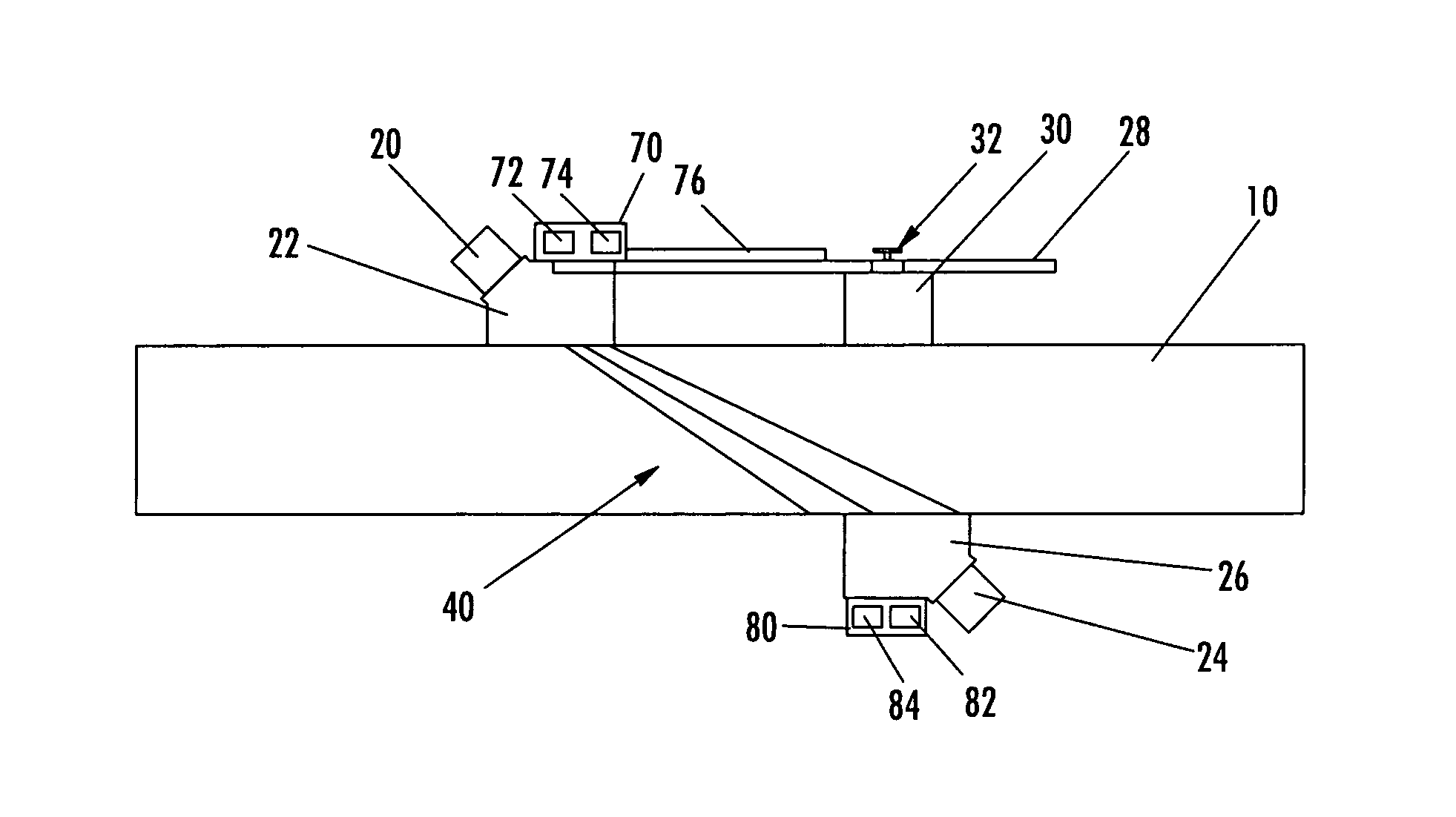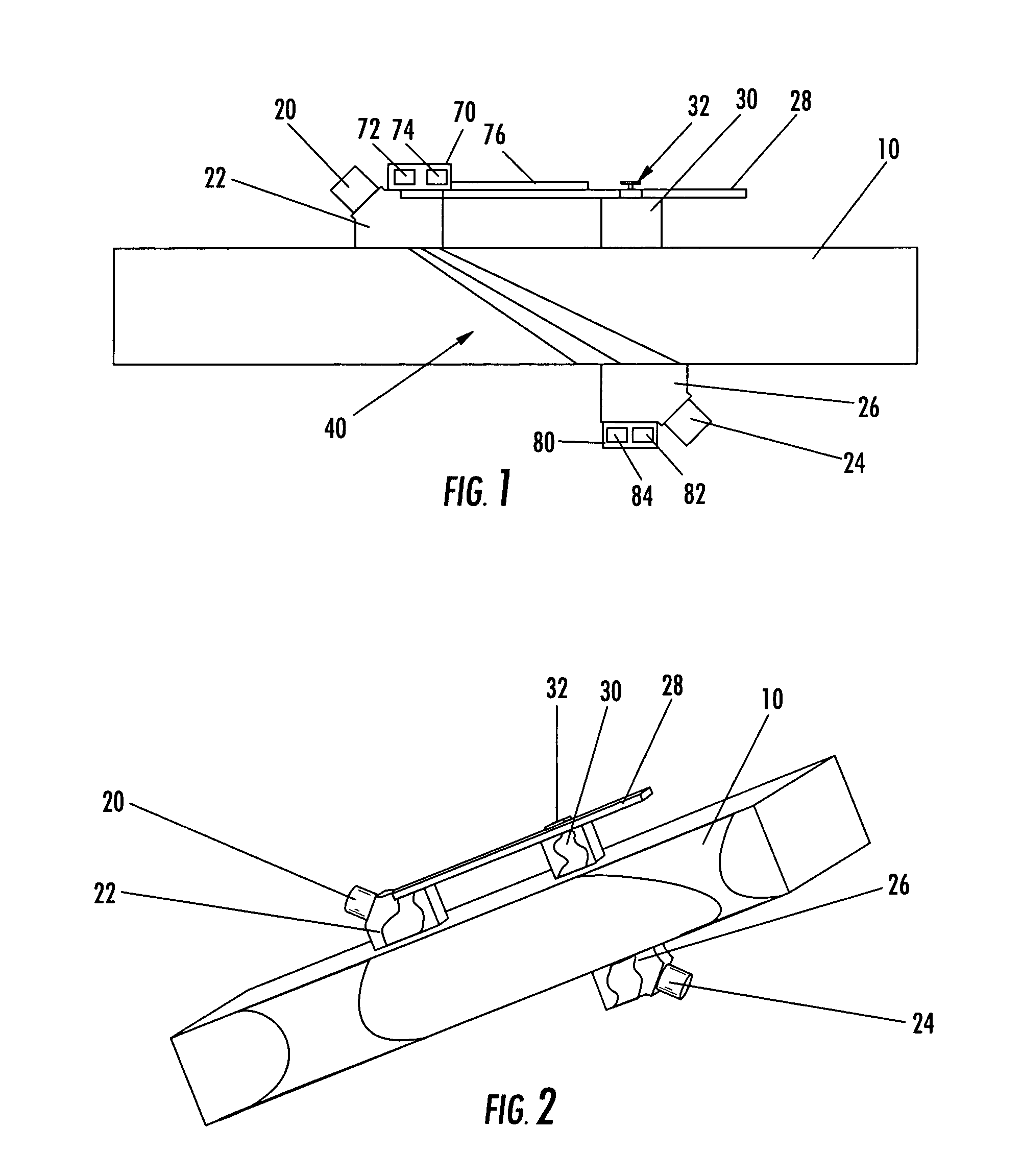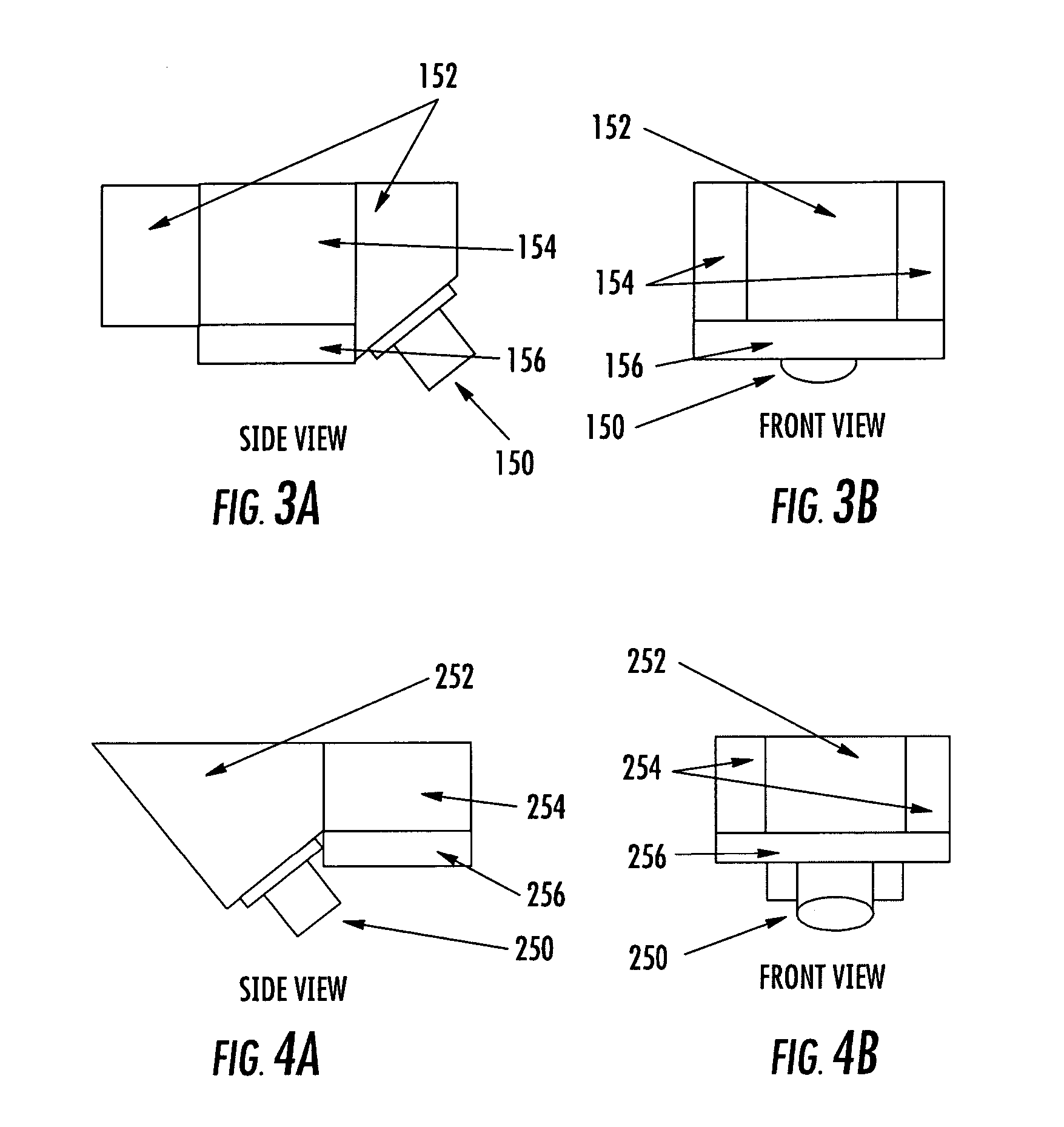Angle beam shear wave through-transmission ultrasonic testing apparatus and method
a technology of through-transmission and ultrasonic inspection, applied in the direction of instruments, specific gravity measurement, magnetic property measurement, etc., can solve the problems of introducing additional time and labor, limiting the access to the interior surface of the structure, and traditionally not being able to inspect internal defects of the structure using ultrasonic inspection, etc., to improve the resolution of three-dimensional defects, improve the depth measurement, and improve the effect of three-dimensional image generation
- Summary
- Abstract
- Description
- Claims
- Application Information
AI Technical Summary
Benefits of technology
Problems solved by technology
Method used
Image
Examples
Embodiment Construction
[0025]The present invention will be described more fully with reference to the accompanying drawings. Some, but not all, embodiments of the invention are shown. The invention may be embodied in many different forms and should not be construed as limited to the described embodiments. Like numbers and variables refer to like elements and parameters throughout the drawings.
[0026]When angle beam shear wave transducers have typically been used for non-destructive inspection, a shear wave transducer bounces an ultrasonic signal at an angle off the back and / or end of a structure such that the signal is repeatedly reflected, and the same transducer catches the multiple-reflected signal or a different transducer catches the signal on the same side of the structure as the transmitting transducer. This method may be referred to as angle beam shear wave pitch-catch. The use of angle beam shear waves with multiple reflections may permit inspection of the inside of a structure behind a surface de...
PUM
| Property | Measurement | Unit |
|---|---|---|
| extraction angles | aaaaa | aaaaa |
| insertion angle | aaaaa | aaaaa |
| angle | aaaaa | aaaaa |
Abstract
Description
Claims
Application Information
 Login to View More
Login to View More - R&D
- Intellectual Property
- Life Sciences
- Materials
- Tech Scout
- Unparalleled Data Quality
- Higher Quality Content
- 60% Fewer Hallucinations
Browse by: Latest US Patents, China's latest patents, Technical Efficacy Thesaurus, Application Domain, Technology Topic, Popular Technical Reports.
© 2025 PatSnap. All rights reserved.Legal|Privacy policy|Modern Slavery Act Transparency Statement|Sitemap|About US| Contact US: help@patsnap.com



